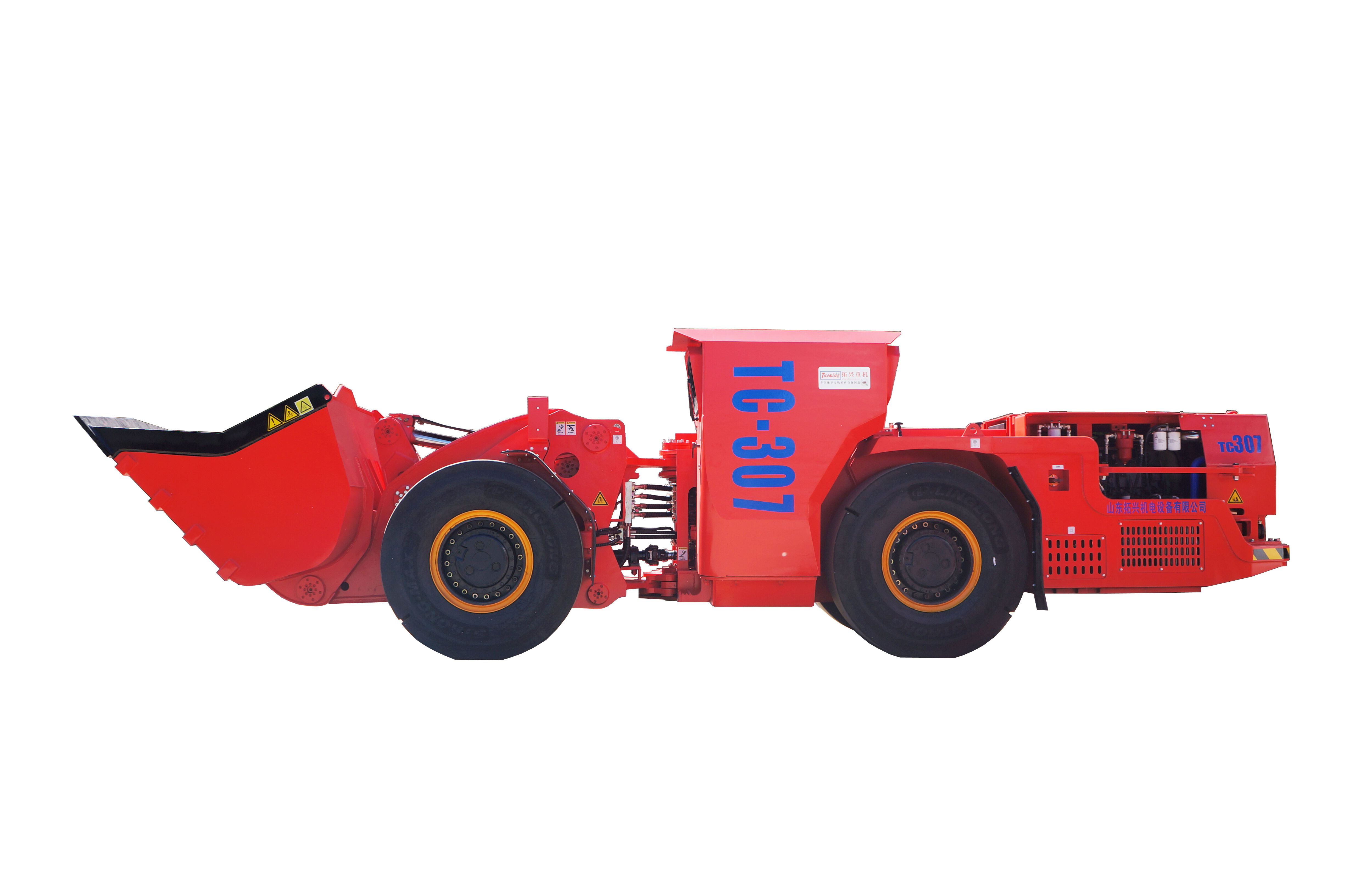Optimizing Underground Operations: The Scooptram Advantage for Ore Handling
Modern mining operations require specialized equipment to efficiently move ore through challenging underground environments while maintaining productivity and safety standards. Scooptrams have emerged as the preferred solution for underground material handling, combining loading and hauling functions into a single versatile machine. These robust vehicles are specifically engineered to navigate tight spaces in underground mines while transporting heavy payloads of fragmented ore from production areas to collection points. Unlike traditional separate loading and hauling equipment, scooptrams offer distinct advantages in maneuverability, cycle time reduction, and operational flexibility that directly impact a mine's bottom line. Their ability to operate in confined stopes and drifts makes them indispensable for modern underground mining operations seeking to maximize ore recovery while minimizing development costs.
Unmatched Maneuverability in Confined Spaces
Compact Design for Narrow Workings
Scooptrams feature a uniquely compact profile that allows operation in underground environments where conventional equipment cannot function. With widths as narrow as 1.5 meters on specialized models, these machines access tight vein deposits that would otherwise require costly overbreak to accommodate larger equipment. The articulated steering mechanism gives scooptrams an exceptionally tight turning radius, enabling efficient operation in small stopes and around tight corners in underground drifts. This spatial efficiency proves particularly valuable in older mines with irregular layouts or operations pursuing narrow, high-grade ore zones. The ability to work in constrained areas without extensive development allows mines to pursue ore bodies that would be economically unviable with less maneuverable equipment, directly impacting resource recovery rates and mine profitability.
Adaptive Performance Across Varied Terrains
Modern scooptrams maintain excellent traction and stability across the uneven surfaces characteristic of underground mining environments. Advanced suspension systems compensate for rough terrain while transporting full loads, preventing material spillage and reducing operator fatigue. Four-wheel drive configurations with differential locks ensure consistent power delivery even when navigating slippery ramp conditions or loose fragmented ore. Some scooptram models offer adjustable wheelbases and chassis heights to accommodate different underground road conditions without sacrificing load capacity. This terrain adaptability allows a single scooptram to efficiently operate across various production areas within a mine, from freshly blasted stopes to well-established haulage levels. The result is a more versatile equipment fleet that requires fewer specialized machines to handle diverse underground conditions.
Productivity Enhancements
Combined Loading and Hauling Functions
The scooptram's integrated design eliminates the productivity losses inherent in systems requiring separate loading and hauling equipment. By combining these functions, scooptrams reduce the number of transfer points in the material handling process, minimizing opportunities for spillage and equipment congestion. Operators can complete full load-haul-dump cycles without waiting for supporting equipment, maintaining consistent production rhythms throughout shifts. Modern scooptrams feature quick-acting hydraulic buckets that reduce loading cycle times while maintaining high fill factors. The seamless transition between loading and hauling modes allows these machines to achieve more productive cycles per hour compared to traditional material handling systems. This efficiency becomes particularly significant in underground operations where working space limits the number of machines that can operate simultaneously in a given area.
High-Capacity Performance
Contemporary scooptrams deliver impressive payload capacities despite their compact dimensions, with some models handling over 20 metric tons per load. Optimized bucket designs ensure maximum material retention during transport while allowing rapid discharge at dump points. Powerful diesel or electric drivetrains provide the necessary torque to move fully loaded scooptrams up steep underground ramps without performance degradation. Many models now incorporate automatic bucket positioning systems that optimize loading angles for different material types, further enhancing efficiency. The combination of substantial payload capacity and rapid cycle times allows a single scooptram to move hundreds of tons of ore per shift, often replacing multiple smaller machines in the process. This high-productivity performance directly translates to lower cost per ton moved, a critical metric in competitive mining operations.
Safety and Operational Benefits
Enhanced Operator Safety Features
Scooptrams incorporate numerous safety systems that protect operators in hazardous underground environments. Reinforced ROPS/FOPS (Roll-Over Protective Structure/Falling Object Protective Structure) cabins meet stringent safety standards for impact protection in underground mining conditions. Advanced climate control systems maintain comfortable cabin temperatures while filtering out dust and harmful particulates from the operator's breathing space. Proximity detection technology alerts operators to nearby personnel or obstacles through visual and auditory warnings, reducing collision risks in low-visibility areas. Some scooptram models now feature automatic braking systems that engage when detecting potential impacts, providing an additional layer of accident prevention. These safety features collectively create a protected operating environment that helps mines meet increasingly stringent worker safety regulations while maintaining productivity.
Reduced Infrastructure Requirements
The scooptram's self-contained operation minimizes the need for extensive underground infrastructure development. Unlike rail-based systems that require dedicated track installation and maintenance, scooptrams operate on compacted haulage roads that can be quickly established or modified as mining progresses. This flexibility proves particularly valuable in exploration phases or when following irregular ore bodies. Scooptrams require less vertical clearance than traditional loaders and trucks, allowing operation in lower-height drifts that reduce development costs. The ability to navigate steep ramps (up to 25% grade on some models) enables more direct access to ore zones, decreasing the need for extensive spiral decline development. These infrastructure advantages allow mining companies to allocate more resources to production rather than development, improving overall project economics.
Technological Advancements
Automation and Remote Operation Capabilities
Modern scooptrams are at the forefront of mining automation technology, offering various levels of remote and autonomous operation. Semi-autonomous systems allow operators to control multiple scooptrams from surface stations, particularly valuable in hazardous areas or during shift changes. Fully autonomous scooptrams can perform repetitive load-haul-dump cycles with precision, maintaining production during breaks or personnel shortages. These automated systems incorporate LiDAR, radar, and advanced camera arrays for obstacle detection and navigation without GPS availability underground. The transition toward automation helps address labor shortages while improving consistency in material handling operations. Mines implementing these technologies report productivity increases of 20-30% from reduced shift change downtime and optimized cycle times, demonstrating the scooptram's evolving role in modern mining operations.
Energy Efficiency Innovations
The latest generation of scooptrams incorporates significant advancements in energy efficiency and emissions reduction. Electric models eliminate diesel particulate emissions entirely, improving underground air quality while reducing ventilation costs. Regenerative braking systems capture energy during downhill travel, extending battery life in electric models or reducing fuel consumption in hybrid configurations. Advanced engine management systems in diesel scooptrams optimize power delivery based on real-time load requirements, minimizing unnecessary fuel burn. Some manufacturers now offer scooptrams with battery-swapping systems that enable continuous operation without lengthy charging delays. These energy innovations not only reduce operating costs but also support mining companies' sustainability goals by lowering the carbon footprint of underground material handling operations.
FAQ
What's the typical production capacity of a standard scooptram?
A mid-sized scooptram typically moves 150-300 tons per hour depending on haul distance and material characteristics.
Can scooptrams handle all types of mined materials?
While optimized for fragmented rock, scooptrams can handle various materials with proper bucket selection and operational adjustments.
How does a scooptram compare to traditional LHD equipment?
Scooptrams generally offer greater maneuverability and faster cycle times than conventional LHDs in most underground applications.

